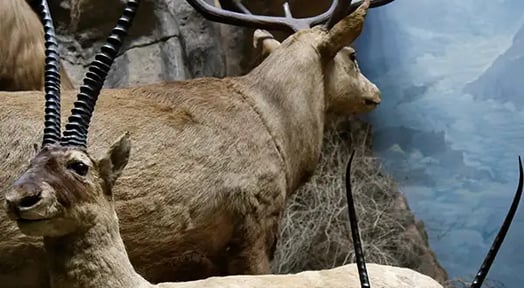The shahtoosh — a luxury scarf woven from the fine fur of illegally poached Tibetan antelopes — sells for as much as $20k, National Geographic reports.

While the sale of Tibetan antelope fur is prohibited as strictly as the sale of rhino, elephant, or tiger products, shahtooshes continue to cosset the cold, cold necks of the flush and fashionable: Between 2015 and 2018, Swiss customs officials confiscated enough shahtooshes to account for 800 Tibetan antelope.
The world’s finest fleece is pretty f*cked up
Shahtooshes come at a high price for customers, but their production comes at a far higher cost to the Tibetan antelope population.
Since Tibetan antelope cannot be domesticated or shorn, killing them is the only way to harvest their fine fur — and weavers need 4 antelope to produce just a single shahtoosh.
Deadly demand for the fine fabric wiped out 90% of Tibetan antelope, which live exclusively on the remote Tibetan Plateau. The herd, which was shaved from a high of 1m antelope to a low of just 75k in the ’90s, is rebounding slowly despite the continued popularity of shahtooshes.
The unofficial global capital of shahtoosh smuggling
In Switzerland, officials seized 41 shahtooshes last year alone. Thanks to cold-necked, deep-pocketed fur-fiends who frequent ritzy Swiss ski resorts, Switzerland is a global shahtoosh smuggling hot spot.
Rich people have a long history with the scandalous scarves: Shahtooshes originated as a status symbol under the Mughal emperor Akbar in the 16th century and have remained popular with global fashionistas through the centuries.
In 2017, Martha Stewart told The New York Times that she “always” travels with a shahtoosh, saying: “They weigh almost nothing, and they’re as warm as a down comforter.”

